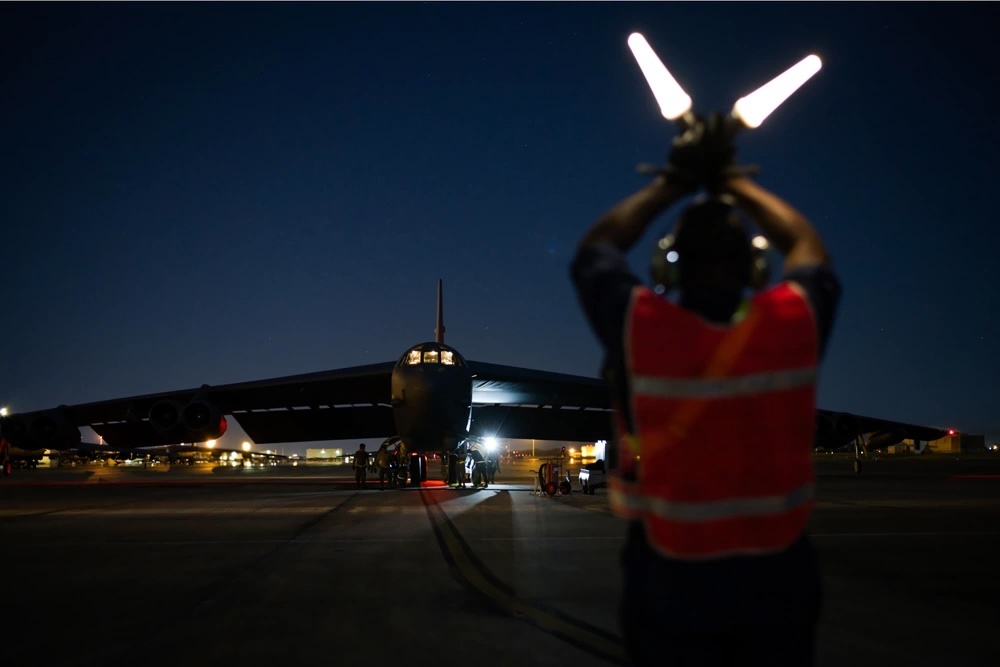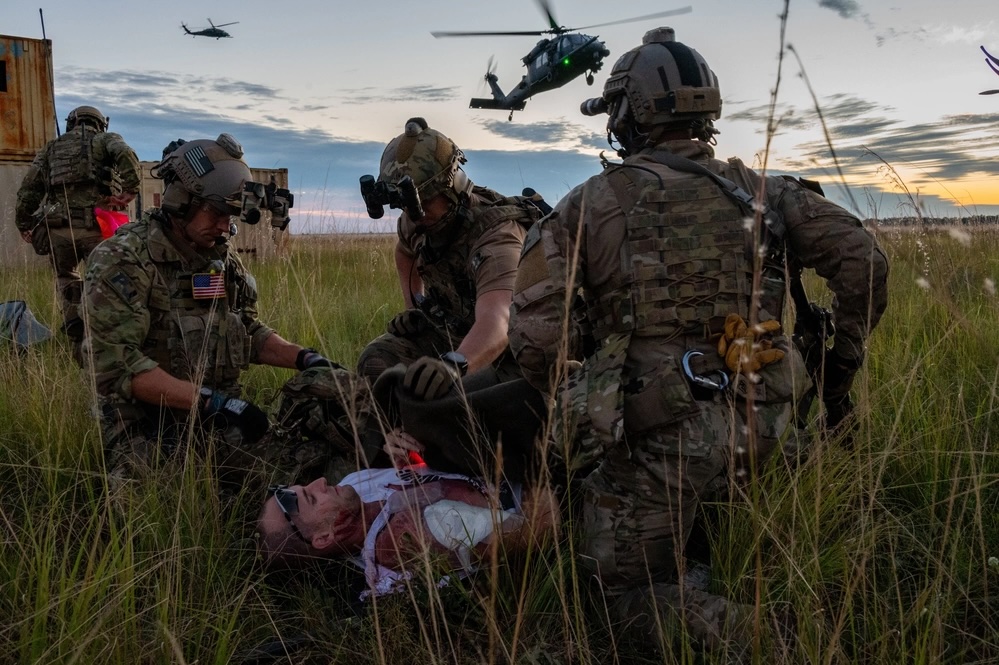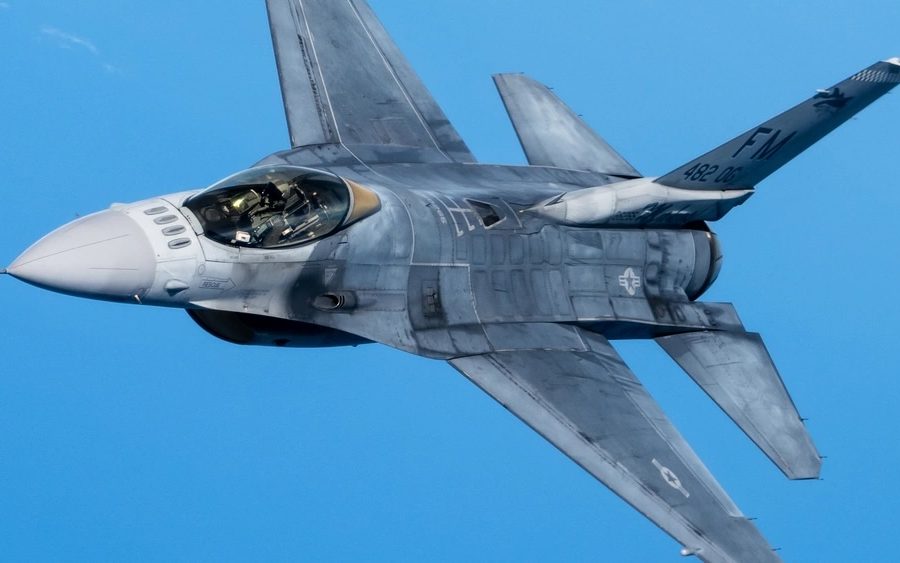Brig. Gen. Regina Sabric had just taken command of the 10th Air Force, the combat arm of Air Force Reserve Command, when her boss, AFRC head Lt. Gen. John Healy, urged his troops to make readiness their top priority.
As Healy described it in a task order issued in August, a ready force is fully manned, trained, equipped, and medically fit so that it can respond immediately to a conflict.
“All Airmen must actively engage in generating personal and unit readiness with adherence to standards and orders,” Healy wrote. “DO NOT wait on your units to coordinate. Understand and leverage every tool and resource available.”
Healy is not the first or only Air Force official to push for readiness. Air Force Secretary Frank Kendall and Chief of Staff Gen. David Allvin recently unveiled a sweeping re-optimization plan in part to make the force ready for war faster. But readiness can be a challenge in the Reserve. The Active-duty Air Force increasingly relies upon it, but the component lacks adequate and predictable funding, according to a 2022 RAND report.
“Our MAJCOM continues to face challenges in the current and upcoming fiscal years—with little or no growth in top line budget authority, continuing resolutions, rebalancing [reserve personnel appropriation] and [operations and maintenance] funds to enable needed training, development, and re-missioning of some of our units,” Healy wrote.
A few months into her tenure as 10th Air Force commander, having had a chance to assess all her units, Sabric decided it would take some creative thinking to meet the challenge.
“Nobody has enough money and everybody would like more, but we’ve got to start thinking outside the box: How can we do things better?” she told Air & Space Forces Magazine. “What could be motivating to people?”

Sabric decided to tap into the military’s competitive nature through a contest called Carnivore Hunger Games. “Carnivore” refers to the 10th Air Force’s mascot and its motto ‘Never the prey,’ while Hunger Games refers to the dystopian book and movie series where teenagers fight to the death with limited weapons and resources. “Hunger Games” is also a term that emerged on unofficial Air Force social media forums to describe the large spending reduction after the 2013 U.S. budget sequestration, but Sabric said that use of the term was unconnected to Carnivore Hunger Games.
In Carnivore Hunger Games, the 17 units assigned to the 10th Air Force have 90 days to show the highest percentage of growth across 19 categories of readiness. The categories include how many enlisted troops in the unit have reached their 5- and 7-level training; how many Active-duty status quotas filled; how many Airmen passed their PT test, checked off all their education requirements, are qualified for duty world-wide, and have their paperwork and performance briefs filled out.
“I want to make sure no Airman is coming to work worrying about ‘hey, I haven’t gotten paid,’ or ‘I haven’t done my travel voucher,’” Sabric said. “If we can take care of some of the financial readiness, that in turn takes care of the Airmen.”
Other categories involve closing out deficiencies flagged by the wing Inspector General and clearing outstanding travel orders and payments for goods and services. The prize: up to $100,000 in Reserve Personnel Appropriations (RPA) funding. RPA covers travel and other costs associated with bringing Reservists on duty.
“When a Reserve Airman is brought onto Active-duty status, whether for training, operational support, or participation in exercises, RPA funds may be utilized,” 10th Air Force spokesperson Christopher Wilson said.
More RPA funding could mean more opportunities for training, which makes it “critical to maintaining a high level of readiness within the Reserve components,” he added.
Congress provides Reserve units with enough RPA funding through the regular appropriations process, Sabric said, but the 10th Air Force had some extra funding left over this year.
“I could have peanut butter spread this among 17 units and given everybody a very small slice of it, but my hope is that competition will drive results,” she said. “By doing this, I think I’ll be able to move the needle further on readiness and then share across the units how they improved on these 19 different areas.”

The 10th Air Force took a baseline of its units before the Hunger Games kicked off on Feb. 15. Each unit will track its performance on the 15th of every month until May 15. Sabric hopes the emphasis on percentage growth in each category, rather than just topline percentage, will encourage middle-of-the-road units. Slides breaking down the contest were posted to the popular unofficial Facebook page Air Force amn/nco/snco shortly after it began.
“Really the premise is the percent increase in this 90-day sprint for readiness,” she said. “The better you do, the more points you get.”
The first place prize is up to $100,000 in RPA funding, the second place prize is up to $50,000, and the third place prize is up to $25,000, but the exact size of the purse is tailored to the size of the unit that wins it, Sabric explained. There are wing, group, and squadron-sized units among the 17 that form the 10th Air Force. But more than the prize, the competition is about incentivizing good habits and sharing lessons learned from the experience.
“Everybody should be doing these tasks to begin with,” the general said. “If something happens in the world, we’re not going to have time to train, so we need to always hold onto basic readiness, and that’s what this is driving for.”
Almost two months into Carnivore Hunger Games, the contest has been “an outstanding success so far,” Wilson said.
“The consistent progress we’re witnessing speaks volumes about our team’s strong work ethic and dedication,” he said. “We’re excited to see this level of commitment and anticipate that the high standards set will continue to climb as the competition progresses.”
Sabric’s idea and Healy’s call for readiness reflect a trend that started after 9/11 where the Air Reserve Component (ARC) is relied on as an operational force, rather than as a strategic one.
“There is inherent tension and contradiction in the operational force construct, for it insists on having reserve components—which are, by definition, a part-time force to be held in ‘reserve’—that are also ready for conflict at any time,” RAND noted in its 2022 report.
The Active-duty Air Force does not have enough troops or equipment to meet all its requirements alone, RAND wrote. But the growing reliance on the Reserve components often comes into conflict with policies on how to pay Reservists, some of which date back to colonial times as a way of preventing overuse of the Reserves. For example, legal structures dictate rigid funding streams for each component, funding is often not aligned with end strength, and the policies restricting Reservists’ service are often ambiguous.
“As one interviewee said about the often unclear and ambiguous processes associated with the evolution toward frequent or long-term use of the ARC for active-duty missions, ‘We’re building the plane as we’re flying it,’” RAND noted.
The long-term reliance on ARC does not appear to be changing anytime soon, which could make a case for clarifying the Air Force’s vision for the Reserve component.
“This may be a good time for the U.S. Air Force to revisit the ongoing dialogue about the purpose and appropriate employment of its ARC—especially with regard to sustained operational support” to the Active-duty force, researchers wrote.

